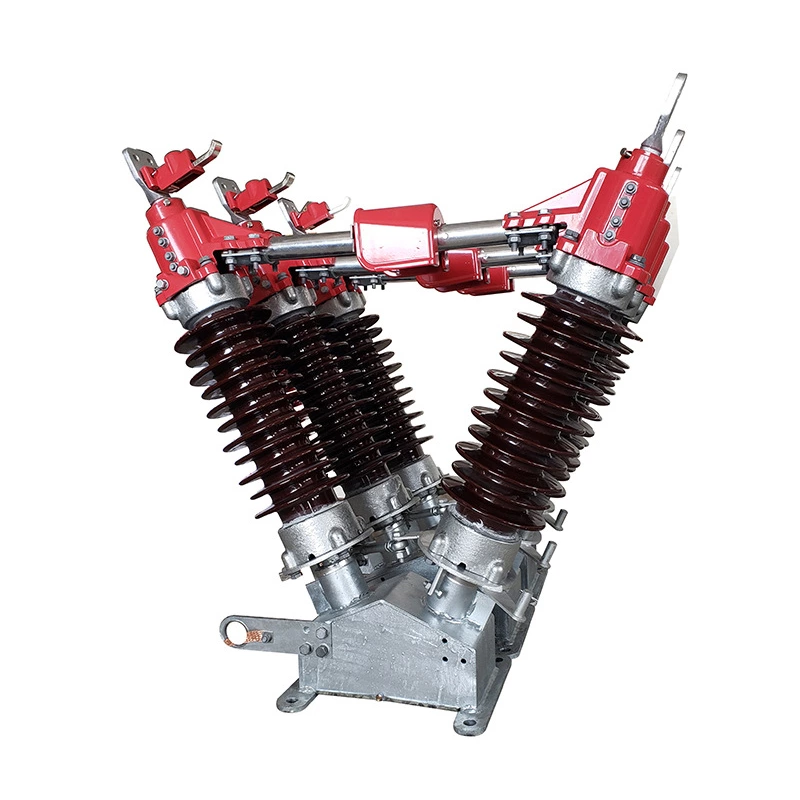Common Problems With High Voltage Isolating Switches
1. What are the common faults?
Answer: Common faults of High Voltage Disconnect Switch include: (1) Overheating of the contact part. (2) Porcelain insulation damage and flashover discharge. (3) Refusal to pull or close. (4) Incorrect pulling or closing.
2. What causes overheating of the contact part of the disconnector during operation?
Answer: The overheating of the disconnector during operation is mainly caused by excessive load, increased contact resistance, and failure to close completely during operation.
3. What are the reasons for the increase in contact resistance of the disconnector?
Answer: The reasons for the increase in contact resistance are: the repulsive force at the contact between the blade and the blade is large, the blade is not tightly closed, causing surface oxidation, which increases the contact resistance. Secondly, arcs will be caused during the pulling and closing of the disconnector, burning the contacts and increasing the contact resistance.
4. How to judge whether the disconnector contacts are overheated?
Answer: It can be judged based on the change in the color of the discoloring paint or the temperature test piece on the contact part of the disconnector, or it can be determined based on the darkening degree of the blade color. It is generally determined based on the infrared temperature measurement results.
5. How to deal with overheating of the disconnector contacts?
Answer: When the disconnector contacts are found to be overheating, first report to the dispatcher, try to reduce or transfer the load, strengthen monitoring, and then handle it according to different wiring:
(1) Double busbar wiring. If the knife switch on one busbar side is overheated, the overheated disconnector is taken out of operation by reversing the busbar, and the power is shut down for maintenance.
(2) Single busbar wiring. Its load must be reduced, monitoring must be strengthened, and measures must be taken to cool it down. If conditions permit, it should be stopped as much as possible.
(3) If there is a bypass circuit breaker, the bypass circuit breaker can be switched.
(4) If the line-side disconnector is overheated, the handling method is basically the same as the single busbar handling method, and a power outage for maintenance should be arranged as soon as possible. During the maintenance operation, the load should be reduced and monitoring should be strengthened.
(5) One and a half circuit breakers can be connected in open loop operation.
(6) For overheated contacts and contacts of the isolating switch on the busbar side, after pulling open the isolating switch, after on-site inspection, if the live working safety distance is met, the busbar side lead-down joint can be removed with power on, and then the treatment can be carried out.
6. How to check and deal with the failure of the electric operation of the isolating switch?
Answer: After the electric operation of the isolating switch fails, first check whether there is any error in the operation, then check whether the operating power supply circuit and the power supply circuit are intact, and whether the fuse is blown or loose. Whether the electrical locking circuit is normal.
7. How to deal with the welding deformation of the isolating switch contacts, the damage of the insulators, and the serious discharge?
Answer: In these cases, the power should be cut off immediately, and the monitoring should be strengthened before the power outage.
8. How to deal with the refusal of the isolating switch to open or close?
Answer: (1) Due to mechanical failures such as shaft pin falling off, wedge bolt withdrawal, cast iron breakage, or electrical circuit failure, the knife rod and the operating mechanism may be disconnected, causing the disconnector to refuse to close. At this time, an insulating rod should be used for operation, or a wrench should be used to turn the shaft of each phase disconnector while ensuring personal safety.
(2) Refuse to trip. When the disconnector cannot be opened, if the operating mechanism is frozen, it can be gently shaken and the supporting porcelain bottle and various parts of the mechanism can be observed to find the obstacle location according to where deformation and displacement occur. If the obstacle location occurs in the contact part of the disconnector, it should not be forcibly opened, otherwise the supporting porcelain bottle may be damaged and cause serious accidents. At this time, the only way to deal with it is to change the operation mode of the equipment.
9. How to deal with the disconnector that cannot be closed?
Answer: The disconnector cannot be closed in most cases due to rust, jamming, and improper maintenance and debugging. In this case, the disconnector can be opened and then closed. For 220KV disconnectors, an insulating rod can be used to push them in. If necessary, a power outage should be applied.
High-voltage disconnectors should be inspected 1-2 times every 2 years.

